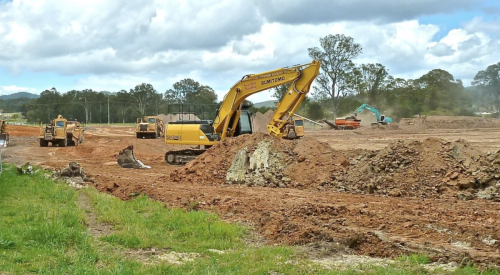The latest data the U.S. Census Bureau and HUD released shows the inventory of completed but unsold new houses on the market reached 128,000 in March — the highest level ever recorded since 1973.
"This is certainly not a time to be building a lot of specs," says Littleton, Colo.-based management consultant and Professional Builder columnist Chuck Shinn, "especially with the public builders' discounting homes by $100,000 or more to try to maintain their sales velocities."
Fannie Mae Chief Economist David Berson notes the March inventory of completed homes represents a four-month supply at the March sales pace, which is less than more than 4-month supply recorded in January this year, when the completed inventory stood at 120,000.
Berson cites three categories: houses with permits but not started, houses under construction and those completed but not sold. "The first two components have been at record levels for several months, but builders can eat permits and just not start those houses. They can change houses under construction to try to make them more saleable. But when houses are completed, there's not much you can do to move them except use incentives that lower the price.
"It's disturbing that the inventory of completed, unsold houses has now joined the others in record territory," Berson says. "Fortunately, it's still not high in relation to sales. If sales remain strong, these excess inventories can be worked through fairly quickly."
California-based consultant and GIANTS columnist John Burns says spec sales will not produce the margins builders in many previously hot markets have come to expect. "In many markets where corporate relocations represent a high percentage of buyers, builders have always started many homes as specs. Cutting delivery time enhances the chance of making the sale. But the public builders now seem intent to grow their businesses regardless of the market, so they will sell houses at whatever price is necessary to maintain their velocities."
Burns says the public builders' attempts to lower costs with just-in-time deliveries of materials compounds the problem. "They are trying to get into even-flow," Burns says, "but they hate cutting their rate of production, such as from 10 a day to seven a day. They've got so much profit built into the land in their current communities, I don't look for them to cut back the rate until they face that decision on new communities, where they bought the land last year instead of five years ago.
"Until then, they will sell at whatever price they need to maintain the velocity, and private builders will have to compete with that price," Burns warns.
Shinn suggests builders use a formula to keep spec inventories from getting too high: "Take the last three months of sales and multiply by four to get your current annual sales rate. Then keep your specs at no more than 20 percent of that total. The spec starts need to go down as the sales pace drops."












